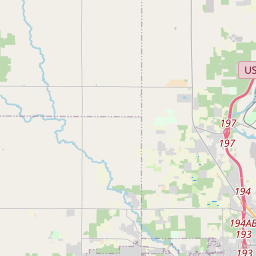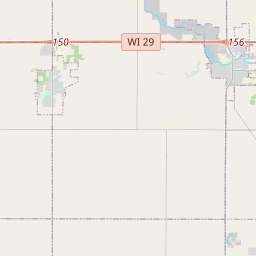Business Boomed at Big Bull Falls
Historical marker location:
204 West Scott Street, Wausau, Wisconsin
( Marker can be reached from Scott Street (State Highway 52) near Washington Street.)













© OpenStreetMap contributors
The world's largest music festival, Summerfest, takes place in Milwaukee each year. It has been held annually since 1968 and features over 800 acts performing on 11 stages over 11 days.
About Marathon County
Marathon County Timeline
Marathon County, located in central Wisconsin, has a rich and varied history that dates back thousands of years. The region was originally inhabited by various Native American tribes, including the Ho-Chunk, Menominee, and Ojibwe peoples. These tribes relied on the area's abundant natural resources, such as the Wisconsin River and thick forests, for sustenance and trade.
European settlement in the area began in the mid-19th century, with the arrival of fur traders and lumbermen. The establishment of the Wausau Dam on the Wisconsin River in 1844 paved the way for industrial development, as it provided a reliable source of power for sawmills. This led to the rapid growth of Wausau, the county seat, which soon became a bustling lumber town.
The lumber industry thrived in Marathon County throughout the late 19th and early 20th centuries. The area's vast forests supplied the timber that fueled the construction boom in cities like Chicago and Milwaukee. Lumber barons amassed great fortunes, and the county became known as the "Lumber Capital of the World." However, by the early 20th century, the forests began to dwindle and the industry declined, leading to a shift in the local economy.
Following the decline of the lumber industry, Marathon County diversified its economy and focused on manufacturing and agriculture. Today, the county is home to a range of industries, including paper production, metal fabrication, and food processing. Additionally, the agricultural sector has remained an important part of the local economy, with dairy farming being especially prominent.
Throughout its history, Marathon County has also experienced significant population growth and cultural diversity. The county is home to a vibrant mix of ethnic backgrounds, including German, Polish, and Scandinavian settlements. This has influenced the county's rich cultural heritage, which is celebrated through various events and traditions. Overall, Marathon County's history is marked by a dynamic evolution from its Native American roots to its role as a thriving industrial and agricultural hub in central Wisconsin.
European settlement in the area began in the mid-19th century, with the arrival of fur traders and lumbermen. The establishment of the Wausau Dam on the Wisconsin River in 1844 paved the way for industrial development, as it provided a reliable source of power for sawmills. This led to the rapid growth of Wausau, the county seat, which soon became a bustling lumber town.
The lumber industry thrived in Marathon County throughout the late 19th and early 20th centuries. The area's vast forests supplied the timber that fueled the construction boom in cities like Chicago and Milwaukee. Lumber barons amassed great fortunes, and the county became known as the "Lumber Capital of the World." However, by the early 20th century, the forests began to dwindle and the industry declined, leading to a shift in the local economy.
Following the decline of the lumber industry, Marathon County diversified its economy and focused on manufacturing and agriculture. Today, the county is home to a range of industries, including paper production, metal fabrication, and food processing. Additionally, the agricultural sector has remained an important part of the local economy, with dairy farming being especially prominent.
Throughout its history, Marathon County has also experienced significant population growth and cultural diversity. The county is home to a vibrant mix of ethnic backgrounds, including German, Polish, and Scandinavian settlements. This has influenced the county's rich cultural heritage, which is celebrated through various events and traditions. Overall, Marathon County's history is marked by a dynamic evolution from its Native American roots to its role as a thriving industrial and agricultural hub in central Wisconsin.
Marathon County Timeline
This timeline provides a glimpse into the major events and milestones that have shaped the history of Marathon County, Wisconsin.
- 1839: Marathon County is created by the Wisconsin Legislature.
- 1840: The first log cabin is built in what is now the city of Wausau.
- 1850: The first sawmill is constructed along the Wisconsin River.
- 1852: The first school is built in Wausau.
- 1861: Wausau becomes the county seat of Marathon County.
- 1874: A devastating fire destroys much of downtown Wausau.
- 1882: The Wisconsin Valley Railroad reaches Wausau, boosting the local economy.
- 1920: Marathon County's population exceeds 50,000 residents.
- 1952: Rib Mountain State Park is established.
- 1962: The first section of the Dwight D. Eisenhower Memorial Bridge opens in Wausau.
- 1974: The Marathon County Historical Society is founded.
- 1992: The Leigh Yawkey Woodson Art Museum opens in Wausau.
- 2010: The Marathon County Public Library opens its new Wausau headquarters.